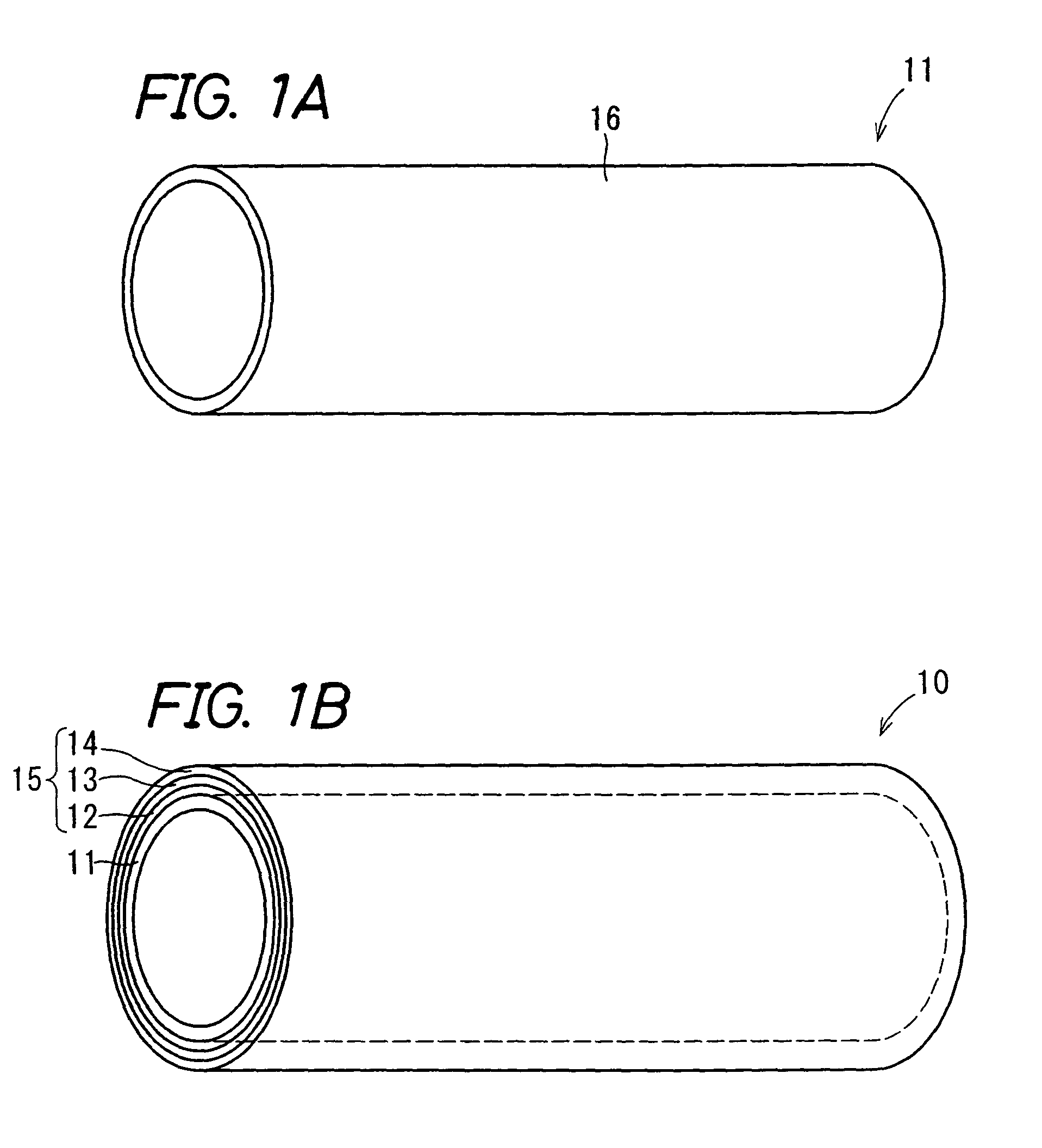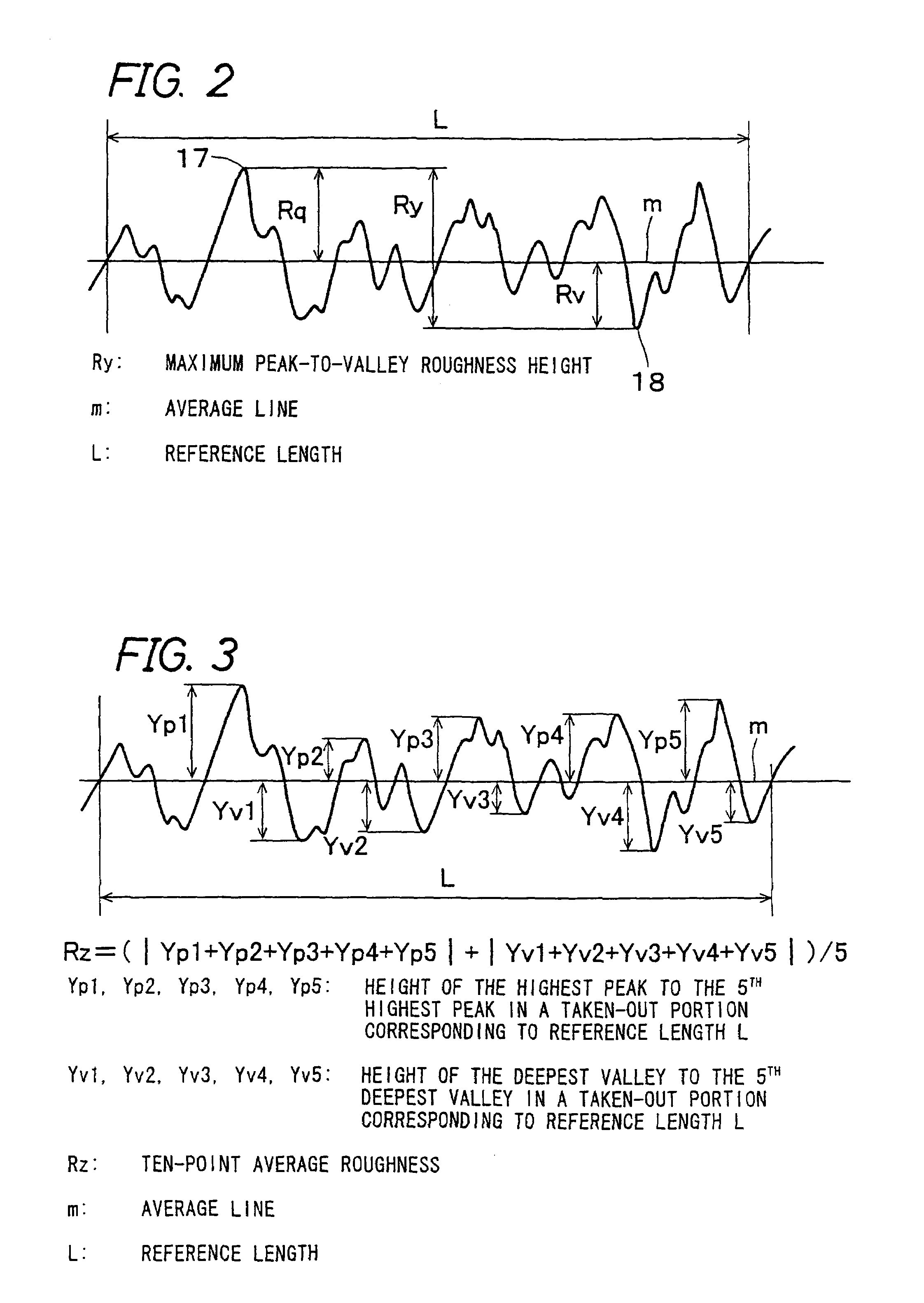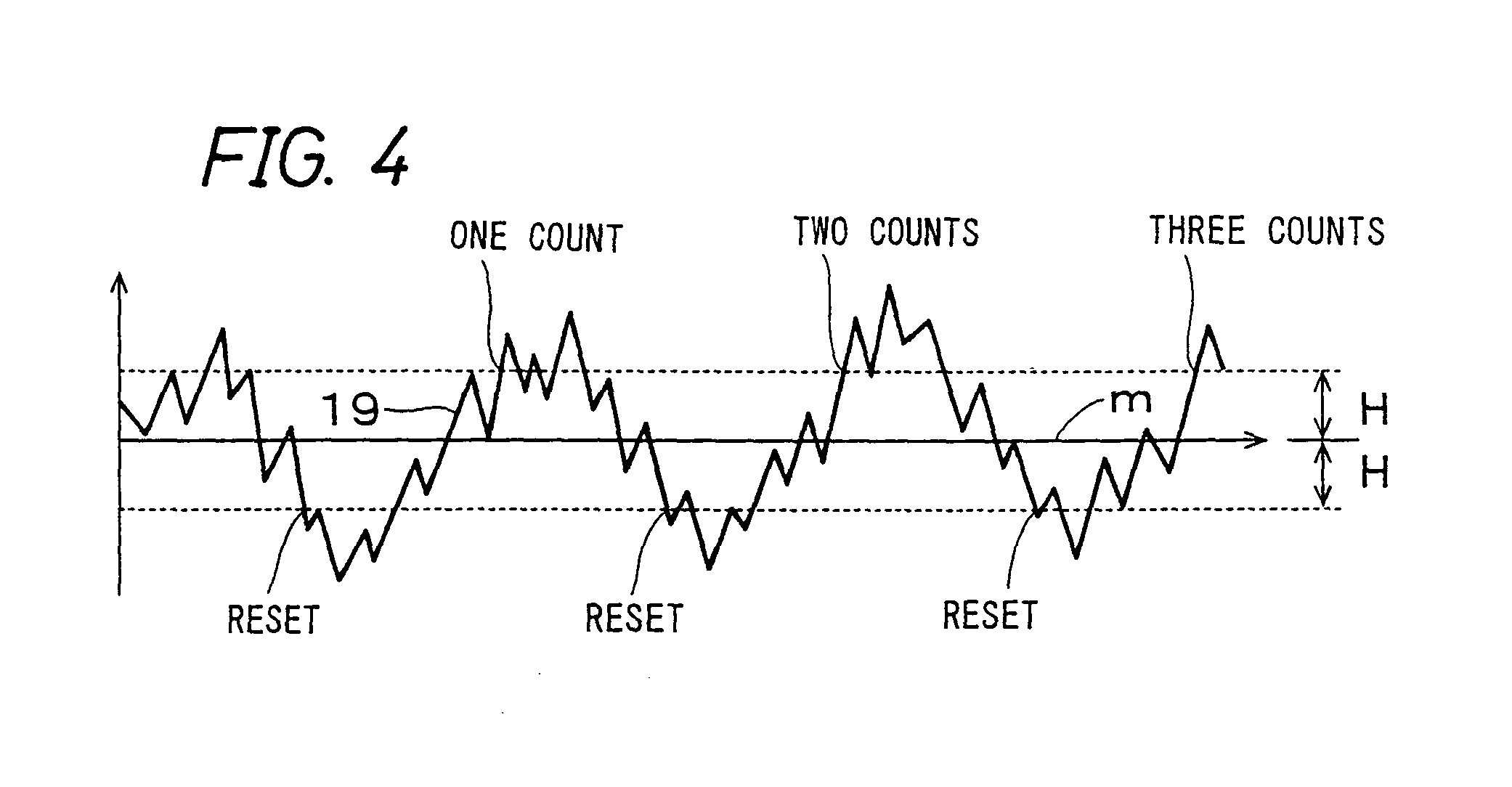Electrophotographic photoreceptor and method for producing the same
a photoreceptor and electrophotographic technology, applied in the field of electrophotographic photoreceptors and a method for producing the same, can solve the problems of difficult correlation between the occurrence of interference fringes and surface roughness only with ry, ra, rz and sm, and achieve the effects of limiting the surface roughness of a conductive substrate, interference fringes, and high precision
- Summary
- Abstract
- Description
- Claims
- Application Information
AI Technical Summary
Benefits of technology
Problems solved by technology
Method used
Image
Examples
examples
[0120]Hereinafter, examples of the invention will be described. However, the invention is not limited to the examples.
examples 1 to 11
[0121]A cylindrical conductive substrate made of aluminum having a diameter of 30 mm, a thickness of 0.75 mm and a length of 322.3 mm was prepared. The outer circumferential surface of this cylindrical conductive substrate made of aluminum is cut and processed with a diamond cutting tool while varying the shape of the blade of the cutting tool, the travel speed of the cutting tool, the type of a lubricant and the like. In this manner, the surface was finished such that the surface roughness was in the range of the invention: (a) the maximum peak-to-valley roughness height Ry: 0.8 to 1.4 μm, (b) the centerline average roughness Ra: 0.10 to 0.15 μm, (c) the ten-point average roughness Rz: 0.7 to 1.3 μm, (d) the average peak-to-peak distance Sm: 5 to 30 μm, and (e) the peak count Pc: 60 to 100. The surface roughness of the cut and processed conductive substrate, that is, (a) to (e) were measured with a surface roughness meter SURFCOM 570A (manufactured by Tokyo Seimitsu Co. Ltd.).
[0122...
PUM
| Property | Measurement | Unit |
|---|---|---|
| wavelength | aaaaa | aaaaa |
| height | aaaaa | aaaaa |
| Ra | aaaaa | aaaaa |
Abstract
Description
Claims
Application Information
 Login to View More
Login to View More - R&D
- Intellectual Property
- Life Sciences
- Materials
- Tech Scout
- Unparalleled Data Quality
- Higher Quality Content
- 60% Fewer Hallucinations
Browse by: Latest US Patents, China's latest patents, Technical Efficacy Thesaurus, Application Domain, Technology Topic, Popular Technical Reports.
© 2025 PatSnap. All rights reserved.Legal|Privacy policy|Modern Slavery Act Transparency Statement|Sitemap|About US| Contact US: help@patsnap.com



